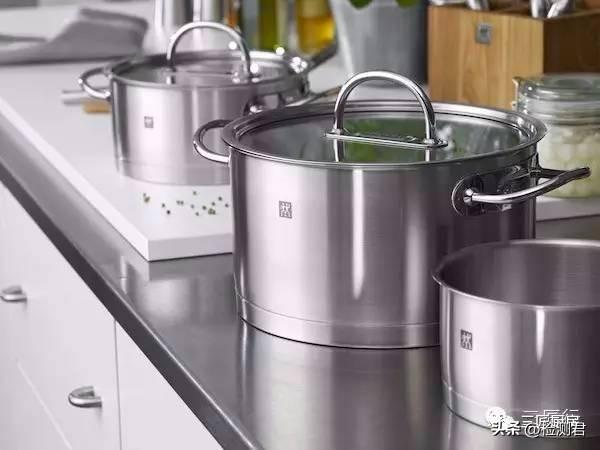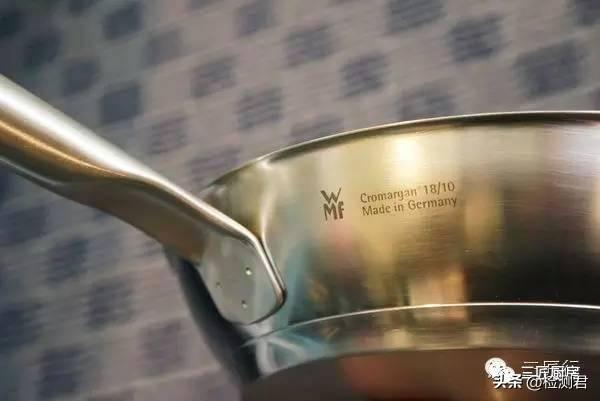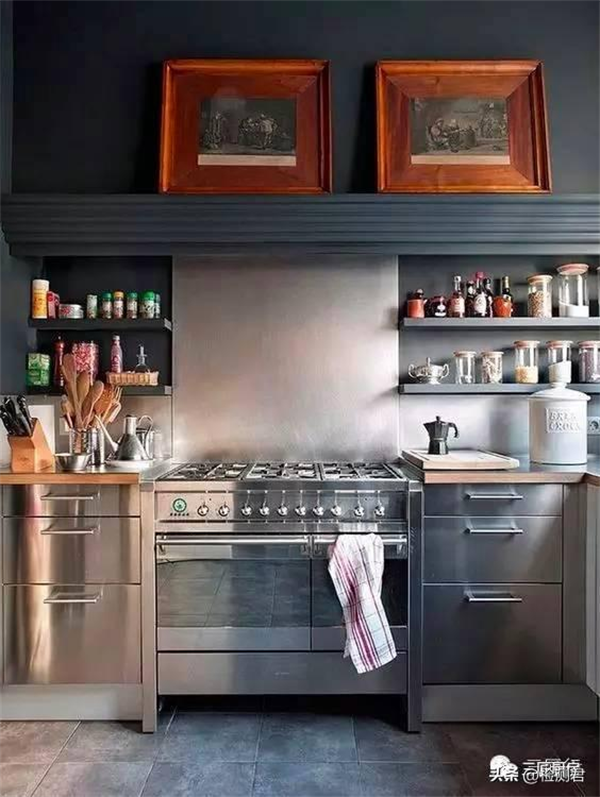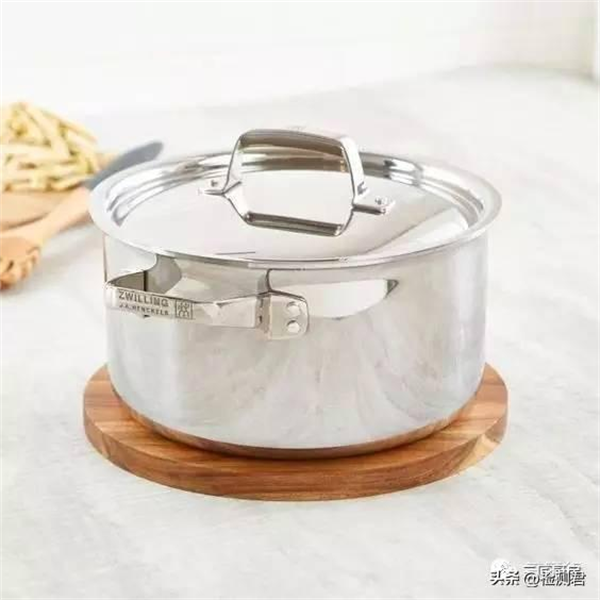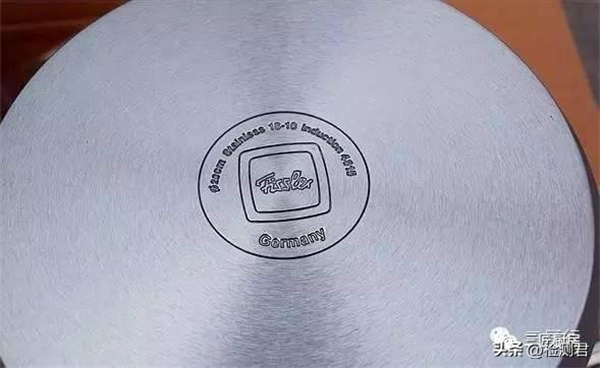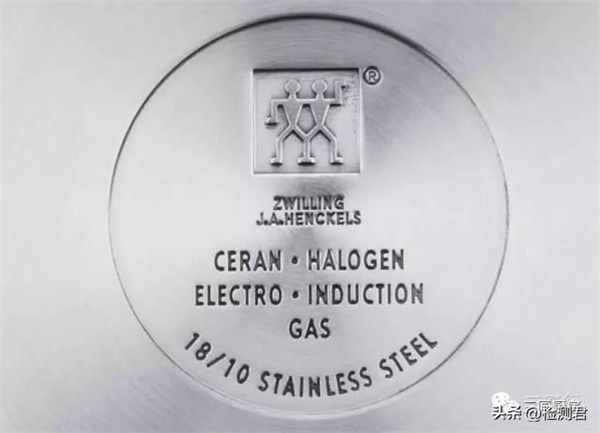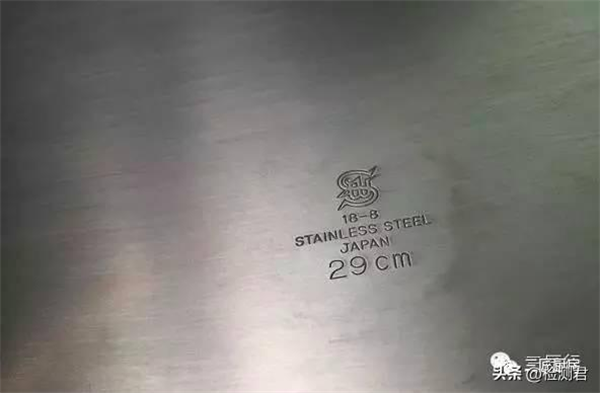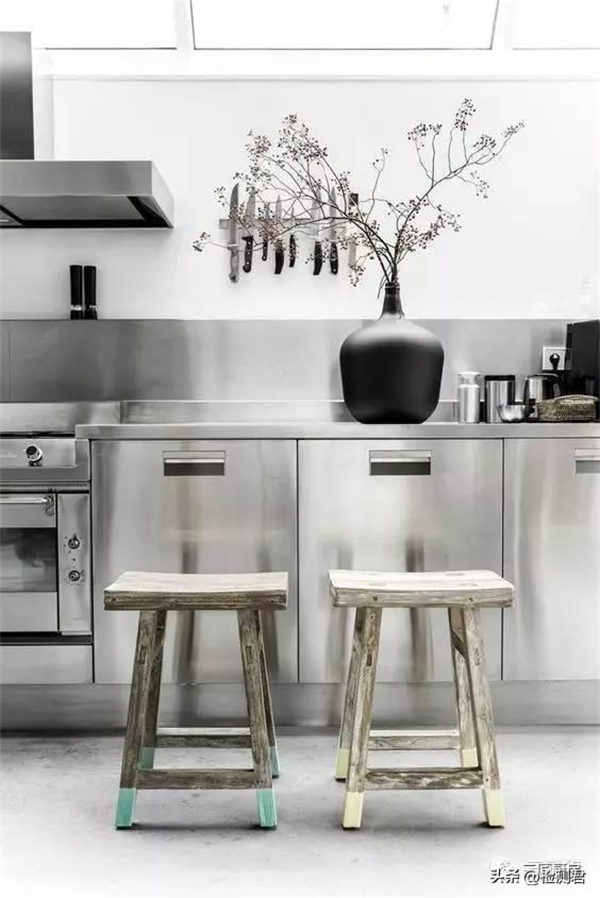The extensive use of stainless steel products is a revolution in the kitchen, they are beautiful, durable, easy to clean, and directly change the color and feel of the kitchen. As a result, the visual environment of the kitchen has been greatly improved, and it is no longer dark and damp, and it is dark.
However, there are many kinds of stainless steel, and the difference between them is not small. Occasionally, safety questions are heard, and it is a problem to choose.
Especially when it comes to pots, tableware and other utensils that directly carry food, the material becomes more sensitive. How to distinguish them?
What is stainless steel?
The special feature of stainless steel is determined by two elements, which are chromium and nickel. Without chromium, it is not stainless steel, and the amount of nickel determines the value of stainless steel.
Stainless steel can maintain luster in the air and does not rust because it contains a certain amount of chromium alloy elements (not less than 10.5%), which can form a solid oxide film on the surface of the steel that is insoluble in certain media.
After adding nickel, the performance of stainless steel is further improved, and it has good chemical stability in air, water and steam, and it also has sufficient stability in many aqueous solutions of acids, alkalis and salts, even at high temperature or In a low temperature environment, it can still maintain its corrosion resistance.
According to the microstructure, stainless steel is divided into martensitic, austenitic, ferritic and duplex stainless steels. Austenite has good plasticity, low strength, certain toughness, easy processing and forming, and no ferromagnetic properties.
Austenitic stainless steel came out in Germany in 1913, and has always played the most important role in stainless steel. Its production and usage account for about 70% of the total production and usage of stainless steel. There are also the most steel grades, so most of the stainless steels you see every day are austenitic stainless steels.
The well-known 304 steel is austenitic stainless steel. The previous Chinese national standard is 0Cr19Ni9 (0Cr18Ni9), which means that it contains 19% of Cr (chromium) and 9% of Ni (nickel). 0 means carbon content <=0.07%.
The advantage of the representation of the Chinese national standard is that the elements contained in stainless steel are clear at a glance. As for 304, 301, 202, etc., those are the names of the United States and Japan, but now everyone is used to this name.
Patented trademark Cromargan 18-10 for WMF pan stainless steel
We often see kitchen utensils marked with the words 18-10 and 18-8. This type of marking method reflects the proportion of chromium and nickel in stainless steel. The proportion of nickel is higher and the nature is more stable.
18-8 (nickel not less than 8) corresponds to 304 steel. 18-10 (nickel not less than 10) corresponds to 316 steel (0Cr17Ni12Mo2), which is the so-called medical stainless steel.
304 steel is not a luxury, but it is by no means cheap
The impression that austenitic 304 stainless steel is very high-end is due to Xiaomi, who has packaged a common daily necessities for decades into high-tech products.
In the kitchen daily environment, the corrosion resistance and safety of 304 are completely sufficient. The more advanced 316 (0Cr17Ni12Mo2) is used in chemical, medical and other fields, with more stable chemical properties and more corrosion resistance.
Austenitic 304 steel has lower strength and is generally used in kitchen containers, while knives use relatively hard martensitic stainless steels (420, 440), which have less rust resistance.
In the past, it was thought that it might cause trouble, mainly 201, 202 and other manganese-containing stainless steels. 201 and 202 stainless steel are the lowest-end products in stainless steel, and 201 and 202 are developed to replace part of 304 stainless steel. The reason is that compared with nickel, manganese is much cheaper. Cr-nickel-manganese austenitic stainless steels such as 201 and 202 are about half the price of 304 steel.
Of course, 304 steel itself is not as expensive as it is, about 6 or 7 yuan per catty, and 316 steel and 11 yuan per catty. Of course, material price is often not a critical factor in the final product price. Imported stainless steel cookware is so expensive, not all because of good materials.
The unit price per ton of steelmaking cast iron is only 1/25 of that of chromium and 1/50 of that of nickel. Among the costs other than the annealing process, the raw material cost of austenitic stainless steel is obviously much higher than that of martensite and iron without nickel. Solid stainless steel. 304 steel is ordinary but not cheap, at least in terms of raw metal value.
According to the current national standards, you can’t figure out which model can’t be used in the kitchen
The old national standard GB9684-1988 stipulates that food-grade stainless steel is divided into containers and tableware. , Martensitic stainless steel (0Cr13, 1Cr13, 2Cr13, 3Cr13) should be used.”
Quite simply, one look at the steel model and you know what material can be used in food processing, containers, cutlery. Obviously, the national standard at that time basically directly identified 304 steel as food-grade stainless steel.
However, the national standard re-issued later – National Food Safety Standard for Stainless Steel Products GB 9684-2011 no longer lists the models, and people can no longer directly judge what is food grade from the model. It just said in general:
“Tableware containers, food production and operation tools, and the main parts of the equipment should be made of stainless steel materials that meet relevant national standards, such as austenitic stainless steel, austenitic ferritic stainless steel, and ferritic stainless steel; tableware and food production machinery Martensitic stainless steel can also be used for the main body of the equipment, such as drilling and grinding tools.”
In the new national standard, the precipitation of metal components is used to determine whether the standard is met in the physical and chemical indicators.
This means that for ordinary people, it is really difficult to distinguish what is food-grade stainless steel, as if anything can be done, as long as there is no problem.
I can’t tell, how should I choose?
The safety concern of stainless steel is manganese. If the intake of heavy metals such as manganese exceeds a certain standard, there will be certain damage to the nervous system, such as memory loss and lack of energy.
So will it cause poisoning because of the use of stainless steel products such as 201 and 202? The answer is vague.
The first is the lack of case proofs in real life. In addition, in theory, there are no convincing results.
There is a classic line in these discussions: talking about toxicity without dose is hooliganism.
Like many other elements, man is inseparable from manganese, but if it absorbs too much, it will cause accidents. For adults, the “adequate amount” of manganese is 2-3 mg per day in the United States and 3.5 mg in China. For the upper limit, the standards set by China and the United States are around 10 mg per day. According to news reports, the manganese intake of Chinese residents is roughly 6.8 mg per day, and it is also reported that the manganese precipitated from 201 steel tableware is negligible and will hardly change people’s total manganese intake.
How are these standard doses obtained, will they change in the future, and the intake and precipitation given by news reports will be doubtful. How to make a judgment at this time?
Close-up of bottom of Fissler 20cm soup pot, material: 18-10 stainless steel
We believe that it is a good habit to consider the particularity of personal life, prevent the superposition effect of risk factors, and try to pursue safer and higher-level kitchen daily necessities under conditions.
So when you can choose 304 and 316, why choose other?
Zwillan TWIN Classic II Deep Cooking Pot 20cm Bottom Closeup
How to identify these stainless steels?
German classic brands such as Fissler, WMF and Zwilling commonly use 316 (18-10), and the top products are indeed unambiguous.
The Japanese use 304, and they often state their ingredients directly.
For products whose sources are not very trustworthy, the most reliable method is to send them to the laboratory, but most consumers do not have this condition. Some netizens think that using magnets to detect magnetic properties is a means, and that austenitic 304 steel is non-magnetic, while ferrite Body and martensitic steel are magnetic, but in fact austenitic 304 steel is not non-magnetic, but slightly magnetic.
Austenitic steel will precipitate a small amount of martensite during cold working, and it has certain magnetic properties on the tensile surface, bending surface and cut surface, and 201 stainless steel is also slightly magnetic, so it is not reliable to use magnets.
The stainless steel detection potion is an option. In fact, it is to detect the content of nickel and molybdenum in the stainless steel. The chemical substances in the potion react with the nickel and molybdenum in the stainless steel to form a complex of a specific color, so as to know the inner nickel and molybdenum of the stainless steel. approximate content.
For example, 304 potion, when the nickel in the tested stainless steel is greater than 8%, will display color, but because the nickel content of stainless steel of 316, 310 and other materials is also greater than 8%, so if the 304 potion is used to detect 310, 316 The stainless steel will also display the color, so if you want to distinguish between 304, 310, and 316, you must use the corresponding potion. In addition, the stainless steel on-site detection potion can only detect the content of nickel and molybdenum in the stainless steel, but cannot detect the stainless steel. The content of other chemical components in stainless steel, such as chromium, so if you want to know the precise data of each chemical component in stainless steel, you have to send it to professional testing.
In the final analysis, choosing a reliable brand is a way out when conditions Permit0
Post time: Sep-08-2022







